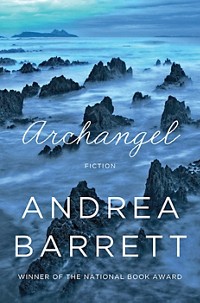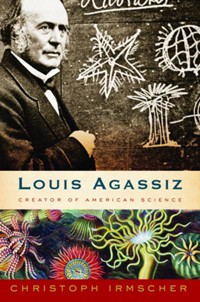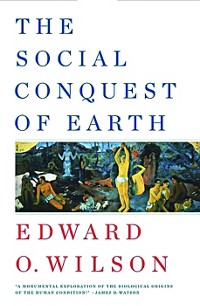Advertisement
Grab your lab coat. Let's get started
Welcome!
Welcome!
Create an account below to get 6 C&EN articles per month, receive newsletters and more - all free.
It seems this is your first time logging in online. Please enter the following information to continue.
As an ACS member you automatically get access to this site. All we need is few more details to create your reading experience.
Not you? Sign in with a different account.
Not you? Sign in with a different account.
ERROR 1
ERROR 1
ERROR 2
ERROR 2
ERROR 2
ERROR 2
ERROR 2
Password and Confirm password must match.
If you have an ACS member number, please enter it here so we can link this account to your membership. (optional)
ERROR 2
ACS values your privacy. By submitting your information, you are gaining access to C&EN and subscribing to our weekly newsletter. We use the information you provide to make your reading experience better, and we will never sell your data to third party members.
Physical Chemistry
Darwin's Genius
by Rudy Baum, Editor-in-chief
January 23, 2006
| A version of this story appeared in
Volume 84, Issue 4
My son Michael and I visited the exhibit on Charles Darwin at the American Museum of Natural History (AMNH) in New York City over the holidays. It is the finest, most thoughtful and well-structured scientific exhibit that I have ever experienced. After spending almost three hours touring the exhibit, I came away with a much deeper appreciation of Darwin's genius.
I am largely self-taught concerning evolution. Early in my career as a C&EN reporter, I read "The Origin of Species" in preparation for attending the federal trial on the Arkansas law that required creationism to be taught with evolution in biology classes. I've read numerous books on aspects of evolution by scientists like Richard Dawkins and Stephen Jay Gould. I consider myself reasonably conversant on the topic.
However, I realize now that I did not know much about Darwin himself, having never read a biography of him. I had, in fact, a sort of simplistic, high school textbook image of Darwin that I suspect a lot of people share: A young naturalist spends five years circumnavigating the world on the Beagle; is exposed to a wide variety of flora and fauna, especially the curiously adapted plants and animals in the Galapagos Islands; returns to England and spends 20 years dithering over "The Origin." Only the fact that another naturalist, Alfred Russel Wallace, independently developed the idea of natural selection as the driving force behind evolution spurred Darwin to finally publish his ideas.
The Darwin exhibit at AMNH brings the man and the scientist fully to life. There is the young Charles Darwin, an indifferent student but avid collector-especially of beetles-and observer of nature. One small item in this section of the exhibit is a cartoon, drawn by a classmate, of "Charlie" brandishing a collector's net astride a giant beetle.
Darwin's father, Robert Waring Darwin, a prosperous physician, was firmly opposed to his taking the position as the naturalist on the Beagle. Like so many other fathers (mine included), Robert Darwin thought his son should knuckle down and begin a career. Darwin sought the assistance of an uncle, Josiah Wedgewood, who supported Darwin's desire to sail on the Beagle. The exchange of letters between Darwin and his father is a part of the exhibit. Like so many sons before and after him, Darwin opens, "My dear Father, I am afraid I am going to make you again very uncomfortable."
The section of the exhibit on the voyage of the Beagle is brilliantly arranged to show how what Darwin saw influenced his thinking about species. I found it fascinating that Darwin was every bit as interested in geology as he was in biology. The exhibit points out that, throughout his life, Darwin considered himself first and foremost a geologist and that his notes from the voyage of the Beagle on geological phenomena far outnumber those on biology.
Even the role of pure serendipity in scientific discovery comes into sharp focus in the exhibit. In 1835, Darwin was knocked to the ground by a powerful earthquake in Valdivia, Chile. A few days later, the Beagle reached the Chilean port of Concepción, which had been demolished by the quake. Darwin noticed that portions of the coast at Concepción had been raised a full 8 feet, which suggested a clear mechanism by which marine fossils could be found high in the Andes.
The Darwin who emerges from the exhibit is a precise observer and meticulous scientist. In England after the Beagle's voyage, he published numerous papers and books and collaborated extensively with botanists, zoologists, geologists, and many other scientists and animal breeders to understand the vast trove of specimens he had collected and shipped back to England and to further develop his ideas on the mutability of species. The notebooks in which Darwin developed a detailed concept of evolution through natural selection are in the exhibit. It is thrilling to see, in Darwin's own hand, the first ever depiction of a "tree" of life, with the distance between branches clearly indicated as a measure of the evolutionary distances among species.
Darwin also anticipated many of the objections that would be raised against the idea of evolution, and he answered them decisively. An important part of the exhibit is the thorough examination of the controversies evolution engendered and how they have been addressed.
If you find yourself in New York City between now and the end of May, take the time to explore this remarkable exhibit on this remarkable man.
Thanks for reading.







Join the conversation
Contact the reporter
Submit a Letter to the Editor for publication
Engage with us on Twitter